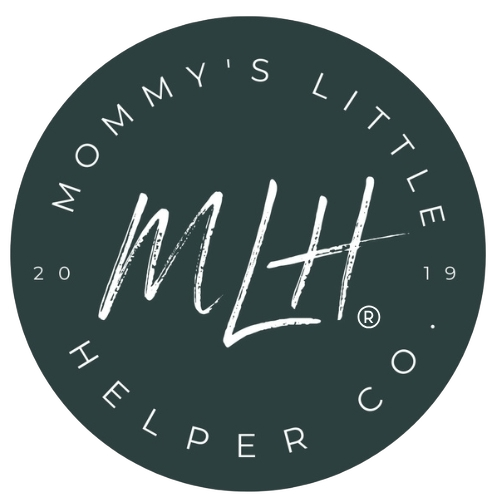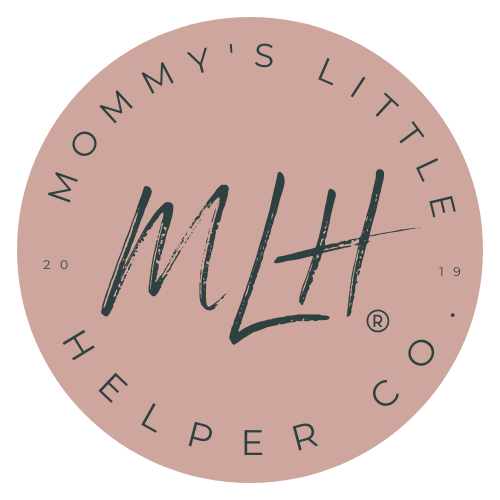
Positive vs. Gentle Parenting: What’s the Difference?
If you’ve ever found yourself deep in a parenting blog rabbit hole at midnight while holding a toddler who refuses to sleep unless they’re on your chest—hi, I see you. I'm also a mom and the heart behind Mommy’s Little Helper. Just like you, I want to raise my little one in a safe, supportive space that encourages independence and kindness.
As parents, we all want the best for our children, but let’s be real—it can get confusing with all the terms being thrown around. Lately, a lot of us have been hearing about “positive parenting” and “gentle parenting,” and it’s easy to wonder: Aren’t they the same thing? Not quite.
Let’s break it down together in a way that’s actually helpful, not overwhelming.
What Is Positive Parenting?
Positive parenting is all about building a strong, respectful relationship between parent and child. The idea is that kids thrive when they feel connected, understood, and loved—no matter what.
It doesn’t mean being permissive. In fact, it’s very structured. But it’s done with encouragement instead of punishment. Think of it as coaching your child through their feelings and choices instead of controlling them.
Some key things about positive parenting:
-
It focuses on what to do rather than what not to do.
-
It uses natural consequences (e.g., if a toy is thrown, the toy goes away—not timeout).
-
Communication is open and age-appropriate.
-
It values mutual respect.
So when your toddler keeps pulling out every drawer in the kitchen, a positive parenting approach might sound like this:
“I see you’re curious, but drawers aren’t safe to play with. Let’s go use your toddler tower and help me stir the pancake mix instead.”
See what I did there? Redirecting with purpose and involving them as your little helper.
What Is Gentle Parenting?
Gentle parenting shares many values with positive parenting but puts even more emphasis on emotional validation and empathy. It’s less about rules and more about connection—always considering the child’s emotional needs first.
Some key things about gentle parenting:
-
It avoids punishments altogether
-
It emphasizes modeling calm behaviour (even when that inner scream is building!)
-
It teaches emotional regulation over obedience
-
It promotes long-term trust over short-term compliance
Let’s say your toddler throws a tantrum when you say it’s time to stop playing. A gentle parenting approach might be:
“I know you’re sad because you were having fun. It’s hard to stop. I’m here with you.”
You’re not rushing to fix it, you’re simply sitting with them in that big feeling. It’s slow. It’s patient. And it’s oh-so hard sometimes.
The Key Differences (And Similarities)
Honestly? These two styles overlap a lot. Both are rooted in respect, connection, and long-term growth. But here’s a quick breakdown:
|
Feature |
Positive Parenting |
Gentle Parenting |
|
Discipline Style |
Natural consequences, consistent limits |
Avoids punishments, focuses on empathy |
|
Focus |
Encouraging good behaviour |
Understanding emotions first |
|
Communication |
Clear, firm, respectful |
Soft, validating, reflective |
|
Role of Parent |
Coach, guide |
Emotional anchor, safe space |
Both styles can work beautifully depending on your child, your household dynamic, and your own comfort. There’s no one-size-fits-all approach, and that’s okay.
What Works Best? A Blend.
You don’t have to pick a side. You might find yourself using positive parenting at the grocery store when setting clear limits and gentle parenting at bedtime when your toddler’s had a long day and needs emotional support.
Parenting isn’t black and white, it’s a million little moments of trying your best.
And truthfully, as long as your parenting comes from a place of love, patience, and the desire to raise kind, secure, confident kids, you're already doing it right.
Why It Matters for Raising Independent Toddlers
Whether you lean toward gentle or positive parenting, both approaches nurture independence, something we all want for our little ones.
That’s exactly why I created Mommy’s Little Helper Co. I wanted tools that supported a safe environment for curious toddlers to explore, especially in spaces like the kitchen, where they always want to be right in the action.
Our toddler tower is an invitation. A safe step up into your world, so your little helper can stir, mix, watch, and feel involved. When toddlers feel trusted and included, their confidence grows. They become more cooperative and even more resilient in managing their big feelings because they’re seen and supported, not just corrected.
Looking for safe, non-toxic, and beautifully crafted toddler furniture?
Check out our kids' furniture collection and explore more pieces designed to support your child’s independence without sacrificing your home’s style. Visit our shop today.




